To meet the growing complexity of modern mine countermeasure missions, Forcys and Eelume have joined forces to deliver a new class of agile autonomous capability. Pairing Eelume’s manoeuvrable autonomous underwater vehicle (AUV) platform with Forcys’ integrated sonar and optical systems from Wavefront Systems and Voyis, will enables navies to locate, assess and confirm underwater threats with greater certainty across complex seabed terrain.
Together, these technologies mark a major advance in autonomous and networked mine countermeasure operations, allowing smaller and smarter systems to deliver the same certainty and coverage once limited to large, manned vessels.
Clearing and securing coastal waters, harbours and confined seabed areas remains one of the most difficult tasks faced by navies today. Conventional AUVs are optimised either for endurance or manoeuvrability, rarely both. In shallow or topographically complex terrain, these limitations create data blind spots, forcing navies to rely on slower and less certain minesweeping techniques.
Thomas Nygaard, CEO at Eelume, said, “Modern mines hide in the most challenging seabed environments — among rocks, slopes and narrow channels that traditional AUVs can’t fully access. Eelume S combines detection, classification and identification in one system, eliminating the need for ROV operations and reducing time-consuming mine sweeping through its manoeuvrability, advanced sensor suite and in-mission processing capabilities. This keeps personnel and vessels out of the minefield and makes MCM safer, faster and more efficient.”
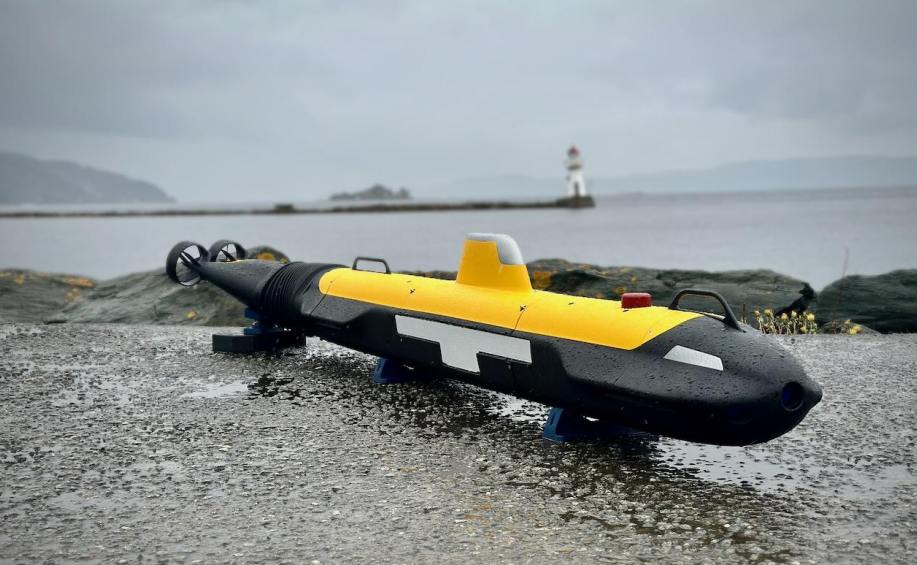
The challenge lay in developing a compact, versatile platform that could deliver both wide-area detection and detailed inspection in any seabed environment, from open waters to confined littoral zones, without compromising range or endurance.
Forcys acts as the integrator of a powerful ecosystem of subsea technologies, bringing together proven innovations from across its group to deliver fully optimised solutions for the end user.
Through the integration of Wavefront Systems’ multi-aperture sonar Solstice and Voyis’ optical imaging systems, Forcys will enable Eelume S to achieve both the wide-area efficiency and close-range fidelity essential to modern MCM missions.
- Solstice delivers image quality close to synthetic aperture sonar (SAS) but at roughly one-tenth of the data burden and with substantially lower power demand. Its tolerance to platform motion makes it ideal for shallow-water and high-relief environments, requiring frequent manoeuvres, where SAS systems are less effective.
- Voyis Observer Imaging System provides high-resolution stills with true-colour representation, enabling rapid visual identification of potential threats once detected.
By acting as a single integration partner, Forcys ensures the optimal synergy between vehicle, sonar and camera systems, streamlining deployment and simplifying logistics for naval customers.
The Solution
The Eelume S platform introduces a flexible, bio-inspired propulsion system featuring dual counter-rotating propellers mounted on an articulated tail. This design grants independent control of pitch, yaw, and roll, allowing the vehicle to move fluidly around obstacles, maintain stability close to the seabed, and capture detailed sensor data in environments inaccessible to conventional AUVs.
Equipped with Forcys’ integrated sensor suite, Eelume S can perform wide-area sonar sweeps to detect and classify objects before transitioning seamlessly to close-range optical inspection for identification. The system’s compact size makes it easy to deploy from uncrewed surface vessels (USVs) for extended, fully remote multi-vehicle operations.
In trials across Norway’s complex coastal terrain, the platform demonstrated consistent area coverage and the ability to deliver actionable, high-resolution data at a fraction of the bandwidth normally required for SAS missions.
Thomas Nygaard, “We outperform traditional AUVs, not just on complex bathymetry, but also on flat seabeds because we can operate closer to the seabed and capture higher-quality images. With the Solstice MAS sonar integrated we get the best of both worlds, combining agile movement with the data quality needed to act quickly on targets.”
The Result
The integration of Eelume S with Forcys’ advanced sonar and imaging systems represents a major evolution in mine countermeasure capability.
The combined system enables Detection, Classification and Identification (DCI) from a single AUV, reducing mission time and complexity while increasing operational certainty.
The solution delivers:
- Greater operational certainty: Precise detection and identification even in confined, high-relief seabeds.
- Enhanced safety and efficiency: Reduced reliance on crewed minesweeping, minimising risk to personnel.
- Scalable autonomy: Compatibility with USVs and networked MCM concepts for coordinated multi-vehicle operations.
- Reduced data burden: Actionable information at lower bandwidth and power consumption, enabling faster mission processing.
For countries like the UK, where complex littoral zones, busy ports and vital offshore infrastructure demand reliable protection, this capability provides an agile and interoperable tool that enhances both national and NATO defence readiness.
Justin Hains, Forcys Business Development Manager, commented; “This collaboration with Eelume demonstrates how Forcys is enabling navies forces like the Royal Navy to operate more effectively in challenging environments previousy considered unhuntable. The integration of Wavefront Systems MAS and Voyis imaging on the Eelume AUV delivers detection, classification and identification from a single platform, a capability proven in Norway’s fjords where traditional AUVs fail due to complex bathymetry. For UK missions at home and deployed, this means faster, safer and more reliable coverage across critical littoral zones.”
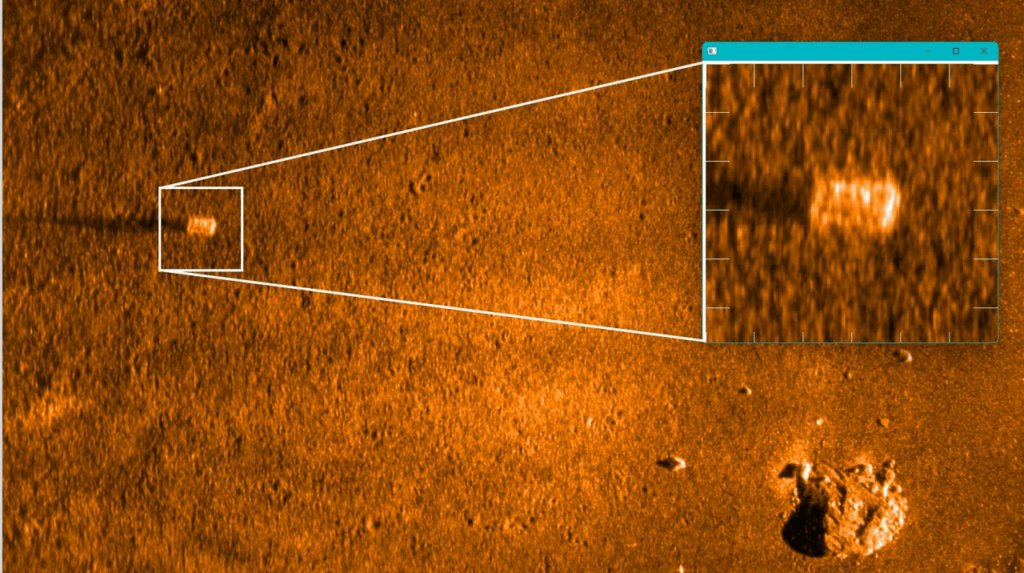

By bridging innovation and integration, Forcys and Eelume are transforming how the world’s navies see, understand, and secure the underwater domain.
Forcys and its technology partners demonstrated world-class undersea defence capabilities at this year’s BlueTIDE Challenge and Technology Showcase, held at the Naval Undersea Warfare Center Newport Division and Sail Newport marina. The team secured two major awards, underscoring Forcys’ leadership in protecting critical undersea infrastructure.
In the technical challenge, Sentinel Intruder Detection Sonar won the top prize in the Sensor category, taking home USD 50,000 and industry recognition for its performance in live conditions. The system competed successfully against 15 rival technologies and showcased the potential of D-SWAAT, a new active tracking mode designed to extend Sentinel’s range and effectiveness.
At the concurrent technology exhibition, Forcys partnered with Voyis, EIVA and VideoRay to deliver a live Visual Simultaneous Localisation and Mapping demonstration. The showcase impressed judges and attendees, earning the prize for Best In-Water Demonstration.
The event brought together 20 companies to a live competition and more than 40 exhibitors from across the undersea domain, attracting over 600 registered visitors. The outcome highlights how Forcys’ integrated technologies, ranging from advanced sonar to vision-based mapping, are enabling navies and infrastructure operators to strengthen security and resilience beneath the surface.
“BlueTIDE is about pushing the boundaries of undersea innovation in real-world scenarios. Winning in both the competitive challenge and the demonstration showcase reflects not just the capability of Sentinel and VSLAM, but also the power of collaboration across our partner ecosystem. It was a true team effort and a proud moment for everyone involved.”
Chris Haugen, Business Development, Forcys Inc. (CAPT, USN Ret.)
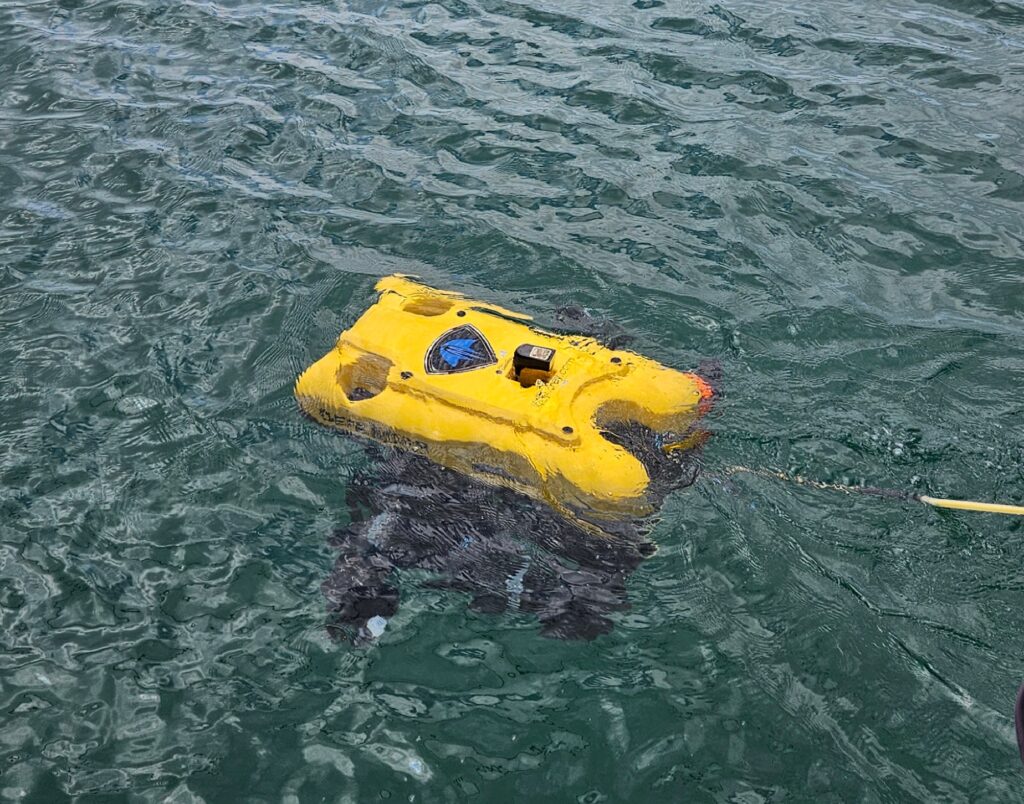
The Indo Pacific International Maritime Exposition is the region’s premier commercial maritime and naval defence exposition, connecting Australian and international defence, industry, government, academia and technology leaders, in the national interest. The exhibition is held from the 4th to the 6th of November.
Global maritime defence company Forcys has confirmed the delivery of Sentinel IDS® Expeditionary Trailers to a long-standing defence customer.
Developed by our technology partner Wavefront Systems, the Sentinel Expeditionary Trailer is a fully self-contained, mobile security unit that provides rapid and effective underwater protection for defence forces operating in remote or infrastructure-limited environments. Designed for quick deployment and maximum mobility, the system offers enhanced situational awareness wherever it is required.
Each trailer houses the world-leading Sentinel Intruder Detection Sonar which can detect and classify divers at ranges of up to 1,000 metres and uncrewed underwater vehicles (UUVs) at up to 1,500 metres. The compact trailer-based configuration allows Sentinel to be deployed where fixed infrastructure is unavailable or unsuitable, making it an ideal solution for expeditionary and forward-operating missions.
Founded in 2022 and built on a legacy of over five decades in the underwater domain, Forcys continues to be trusted by navies and defence organisations around the world.
Delivering more modern and more capable defence solutions, through next-generation situational awareness technology that provide mission-tailored underwater intelligence and control.
This latest delivery reflects the growing international confidence in Forcys and Wavefront’s ability to supply integrated systems built for operational flexibility and effectiveness.
Ioseba Tena, Managing Director at Forcys, commented: “This new offer makes it even easier to arrive on site, deploy the sonar and secure your perimeter. With ongoing developments it’s no surprise that Sentinel is still the world’s most widely deployed intruder detection system, keeping people and assets safe from underwater threats, anywhere, anytime.”
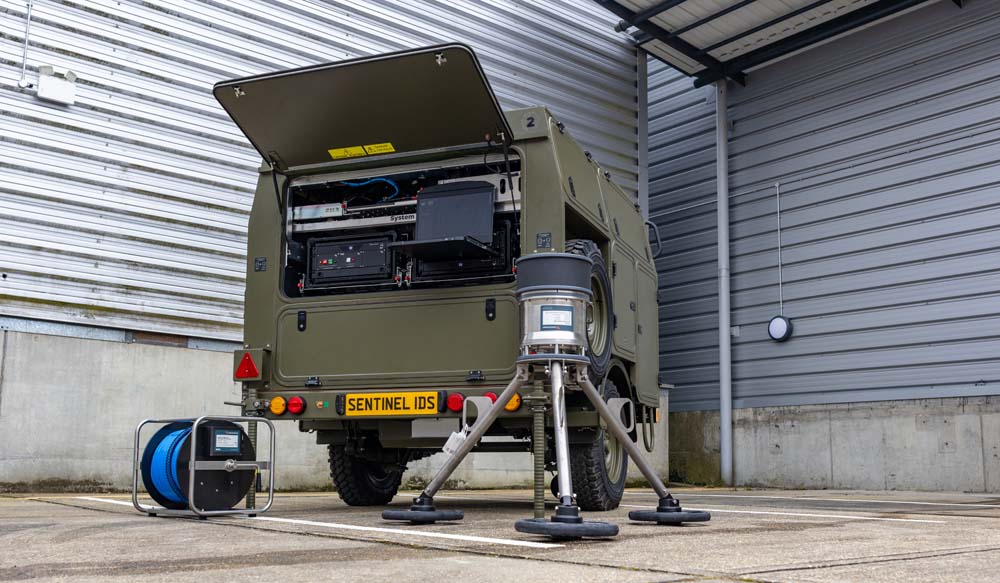
The Sentinel IDS® Expeditionary Trailer can be explored in more detail via the Wavefront Systems website.
Attendees at the Combined Naval Event (CNE) 2025 are invited to visit the Forcys stand to meet the Team and learn more about the Expeditionary Trailer as well as Forcys latest innovations in maritime defence.
At our technology partners’ Wavefront Systems, innovation isn’t just a guiding principle—it’s the foundation of everything they do. Their Solstice Multi Aperture Sonar (MAS) exemplifies this ethos, redefining underwater autonomy by enabling maritime operators to execute missions with enhanced precision, safety, and efficiency.
Solstice MAS represents a significant advancement in sonar technology, achieving a balance between traditional side-scan sonar and synthetic aperture systems. Designed specifically for deployment on small or medium sized autonomous underwater vehicles (AUVs), it delivers high-resolution imaging akin to synthetic aperture sonar (SAS) while maintaining the durability and simplicity required for real-world operations. Its flexibility makes it suitable for critical missions such as mine hunting, hydrography, salvage, search-and-rescue (SAR), and unexploded ordnance (UXO) removal.
“Solstice strikes the perfect balance between cutting-edge performance and practical deployment,” explained James Spinks, Technical Sales Manager (Asia Pacific) at Forcys. “It’s a system that delivers exceptional imaging while remaining robust and reliable for diverse maritime operations.”
Wavefront has designed Solstice to thrive in varied underwater environments. The system operates effectively at shallow depths of just 8 meters and extends its reach to depths of up to 600 meters. This capability unlocks new possibilities for smaller platforms, equipping them with sonar functionalities that were previously out of reach.
A notable deployment occurred in late 2023 when Wavefront collaborated with Voyis and L3Harris to outfit the Iver4 900 platform with a combined AUV payload. This integrated solution, delivered to a NATO Navy, was engineered to detect, classify, and identify mine-like objects, eliminating the need for personnel to enter dangerous zones.
“By combining Solstice’s detection and classification capabilities with Voyis’ laser scanner and camera, the payload ensures critical identification tasks are conducted remotely,” said Spinks. This advancement is a major step toward safer and more scalable maritime operations.
With features like real-time array calibration and multipath suppression, Solstice ensures consistent image clarity even in challenging seabed conditions. Additionally, its alignment with Commercial-Off-The-Shelf (COTS) trends positions it as a ready-to-use solution for fast mission planning, real-time data processing, and reduced logistical complexities.
Far more than just a sonar system, Solstice MAS embodies Wavefront’s and Forcys’ commitment to driving innovation in underwater autonomy. By equipping defence forces and commercial operators with adaptable and reliable tools, it is setting new standards in the evolving landscape of modern maritime operations.
Forcys has been involved in numerous discussions related to Critical National Undersea Infrastructure (CNUI), which result in the conclusion that maritime naval forces and security organisations are being expected to reorient to the new task and are looking for technology to provide quick-win solutions for delivery. But how is this additional activity funded and delivered? How could industry support the protection of their assets, from which they make substantial profit?
The stark reality is that industry will only engage with the process when the operating risk becomes intolerable and/or the profitability of its business is not affected. To compel industry to pay for CNUI protection is not as simple as imposing a levy. A comprehensive approach that aligns financial incentives, regulatory frameworks, and collaboration between the private sector, governments, and naval forces is essential.
This article by Justin Hains, Business Development Manager, discusses the ‘top down’ approaches that could strengthen the security of CNUI and concludes with an initial step towards collective responsibility for security, irrespective of the countries involved.
Highlighting Financial Risks and Losses
Companies must recognize the significant financial risks of infrastructure failure, including disruptions from sabotage, natural disasters, or cyber attacks. Such incidents can lead to substantial downtime, revenue loss, and reputational damage. Potentially, investment in protection could lower insurance premiums, presenting a clear financial incentive to safeguard undersea infrastructure.
Public-Private Partnerships (PPPs)
Governments could encourage joint funding mechanisms, where both public and private sectors share the cost of protection. This could include subsidies or incentives for companies that invest in undersea security. A shared responsibility model motivates both sectors to contribute, minimizing the burden on individual entities.
Economic and Operational Benefits
Protection should be seen as a long-term investment. Preventing service interruptions and costly repairs reduces future expenditures, while avoiding fines for non-compliance or environmental damage. Secure infrastructure enhances reliability, operational efficiency, and could provide a competitive edge for companies prioritizing resilience.
Raising Awareness of Vulnerabilities
Increasing awareness about the growing risks—ranging from cyber attacks to physical sabotage—could spur companies into action. Sharing case studies of past incidents where undersea infrastructure was damaged can help highlight the serious consequences of neglecting protection.
Legislation and Regulation
Governments could implement mandatory security measures for critical infrastructure, with penalties for non-compliance. Additionally, tax incentives or credits can encourage voluntary investment in protection. A regulatory framework could ensure that companies take the necessary steps to safeguard their assets, viewing it as both a legal and financial obligation.
International Cooperation and IMO Framework
Under international law, the United Nations Convention on the Law of the Sea (UNCLOS) grants nations exclusive rights over the seafloor within their Exclusive Economic Zones (EEZs), where much of the critical infrastructure lies. The International Maritime Organization (IMO) provides a framework for the safety and security of maritime infrastructure. Governments can urge industry to cooperate in protecting these assets, noting that disruptions to infrastructure within the EEZ could have both national and international repercussions. Multinational agreements and IMO initiatives can help distribute the costs of protection.
Centralized Reporting and Monitoring Hub
A centralized hub would allow for real-time reporting, monitoring, and coordination among stakeholders. This system would integrate data from various sources—such as satellite surveillance, sensors on infrastructure, and environmental monitoring—to detect potential threats, enabling rapid responses, and inform stakeholders in a timely, accurate and coherent manner. The UK Maritime Trade Operations located in Dubai provides an example of such a response to piracy, armed robbery and potentially mining events, where the shipping industry and naval forces benefit from common situational awareness. A central platform for CNUI would allow quick incident reporting, ensuring coordinated responses from industry, government, and naval forces.
Data Sharing: Asset Location and Environmental Information
Companies should share location data of critical assets and environmental information. This allows authorities to better protect and respond to threats, especially in high-risk zones. Sharing environmental data (e.g., seismic activity or water currents) aids in preventing natural risks that could impact infrastructure. Additionally, sharing cyber security-related data helps protect against digital threats.
Legal and Regulatory Framework for Data Sharing
To encourage data sharing, clear legal frameworks must protect proprietary information while ensuring the sharing of necessary security and environmental data. Governments could offer liability protections for companies that share information in good faith, and establish data-sharing standards for consistency and security.
Conclusion
Key to the success of CNUI protection is the creation of a centralized reporting and monitoring hub, coupled with secure data sharing between industry, government, and naval forces. This could be the first step towards a holistic approach to protection of undersea infrastructure. Underpinned by international frameworks like UNCLOS and conforming to IMO guidelines, this approach offers stronger risk management, quicker response times, and greater resilience, ultimately encouraging industry to invest in the protection of critical infrastructure.
Forcys is pleased to announce the promotion of Dan Zatezalo to the role of Vice President, reinforcing the company’s commitment to delivering cutting-edge naval and subsea solutions to the US military and its allies.
Backed by over fifty years of experience, Forcys offers the global maritime naval sector remote, autonomous, and networked control capabilities delivering integrated situational awareness to customers in the underwater domain.
Covering a range of maritime operations including asset protection, littoral strike, mine warfare, submarine rescue, and submarine and anti-submarine warfare, Forcys seeks to transform the underwater domain by enabling increasingly distributed and automated operations. This is made possible by integrating and bringing to market world-changing solutions from leading technology partners Chelsea Technologies, EIVA, Sonardyne, Voyis, and Wavefront Systems.
With extensive experience in the sector, Dan has served as General Manager for North America and Head of Global Sales becoming instrumental in supporting US operations and global growth. Dan’s leadership will continue to support Forcys’ mission to equip navies with customer-shaped solutions that enhance battlespace advantage both above and below the surface. Attendees at Sea Air Space 2025 are invited to visit the Forcys stand to meet Dan and learn more about Forcys latest innovations in maritime navel forces.
At Forcys, we understand that control of the underwater battlespace depends on more than what can be seen or heard—it depends on what can be shared securely. In today’s contested maritime domain, secure, reliable underwater communication is no longer optional. It’s essential to operational success.
Unlike other military environments, the underwater domain doesn’t allow for traditional radio communications. Instead, acoustic signals, which are vulnerable to range, delay and distortion, remain the only viable method for transmitting data below the surface. Add in the complexity of real-world oceanographic conditions—such as thermoclines and salinity layers—and the challenge becomes even greater.
Despite these limitations, the underwater battlespace is becoming increasingly strategic, particularly as geopolitical tensions rise and the seabed becomes a focal point for both defence and infrastructure security. Without robust encryption and assured communication protocols, adversaries can intercept transmissions and compromise both missions and lives. The threat is real: intercepted signals could reveal the position of a submarine or disrupt command of an autonomous underwater vehicle.
This is where integrated, adaptive networks come into play. By deploying a mesh of underwater communication nodes, Forcys and our technology partners at Acousonix and Sonardyne enable navies to maintain tactical advantage while minimising the risk of detection.
As autonomous systems such as AUVs and UUVs take on more complex roles in surveillance, mine countermeasures, and infrastructure protection, the demand for encrypted, fail-safe communication increases. These platforms operate at the edge of the battlespace and require secure, low-latency updates to perform effectively.
The ability to push edge-processed data and raw sensor information across a secure network enables real-time decision-making. This is how situational awareness becomes decision superiority. Through intelligent prioritisation of data based on latency requirements, a persistent sensor network can cue additional assets onto a contact, protect high-value units, or shift strategy on the fly. This is the difference between reacting and winning.
Beyond traditional military operations, the same need for secure underwater communication applies to defending critical underwater infrastructure (CUI), conducting mine warfare and countermeasures, and securing temporary high-profile events. Whether for short-range or long-distance operations, the principle remains: without secure communication, situational awareness breaks down.
Forcys and our partners have long been at the forefront of secure underwater communications. Software-defined modems developed within this ecosystem allow rapid switching between national and allied security protocols, ensuring interoperability across NATO and coalition forces. This is essential, as future conflicts will rarely be fought alone. Secure communication is not just about technology. It’s about trust. Trust in data, in systems, in the decisions being made at speed in the most demanding environments on earth.
At Forcys, we understand that modern maritime security demands more than just sophisticated sensors or autonomous vehicles – it requires seamless integration of cutting-edge technology. This is where the combined expertise of our technology partners comes into play. The capabilities of EIVA’s ViperFish, alongside advanced solutions from Sonardyne, and Wavefront Systems are reshaping how subsea threats are monitored and managed, ensuring that the maritime defence community has the tools needed for effective real-time operations.
ViperFish is an all-in-one remotely operated towed vehicle (ROTV) designed for high-resolution data collection in autonomous operations. At Forcys we see the integration of this product as a significant step forward in autonomous operations. Designed for seabed imaging and geophysical surveys, ViperFish performs these tasks with remarkable precision, particularly and can even be paired with unmanned surface vessels (USVs). This opens up new possibilities for autonomous operations in complex underwater environments, enhancing mission safety, efficiency and data accuracy.
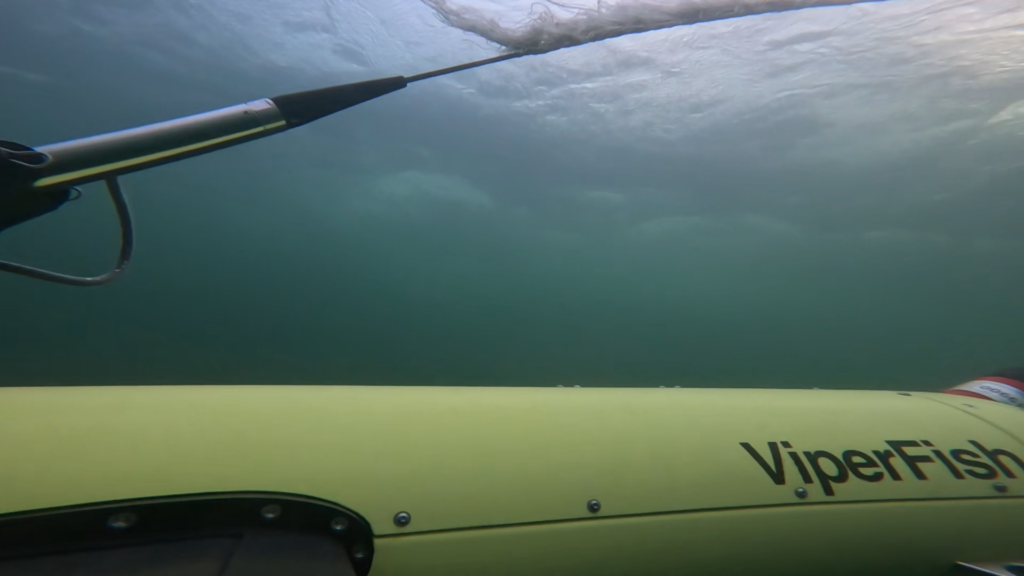
By combining this ROTV with positioning systems, sonar technology and EIVA’s NaviSuite survey software, we deliver a powerful, integrated solution that supports critical defence missions. ViperFish’s ability to automatically maintain a set height above the seabed makes it an invaluable tool for mine countermeasures, UXO (unexploded ordnance) surveys, and rapid environmental assessments.
“Forcys leverages Covelya Group partnerships to deliver solutions that provide capabilities beyond the sum of their individual components,” says Antonio Belfiore, Senior Sales Manager at Forcys. “Additionally, the combined research and development expertise across our group of companies enables Forcys to rapidly adapt to emerging threats and evolving mission requirements. This knowhow was instrumental in the development of ViperFish. Designed to be the tool of choice for mine-hunting across the littoral and in riverine environments, Viperfish is also easy to use and provides your team actionable data in real-time.”
In the context of mine warfare, these integrated solutions are revolutionising the way threat detection is carried out. By relying on autonomous vehicles that can navigate complex underwater environments with precision, defence teams can carry out missions more efficiently and frequently than ever before. The combination of ViperFish’s flexibility and the advanced sensor technologies it brings together enables vast subsea areas to be covered with unprecedented detail.
These advancements not only improve operational efficiency but also provide the necessary foundation for many future maritime and defence security operations.
At Forcys we’re proud to be part of this journey, ensuring that autonomous technology plays a central role in securing your assets.
Read more about our technology partner EIVA.
Discover ViperFish ROTV deployed by ProZero 8m Naval Intelligence USV:
